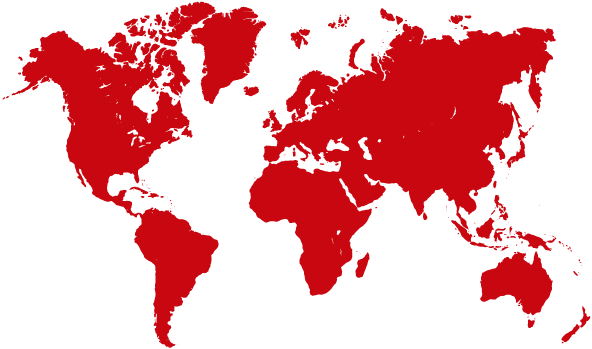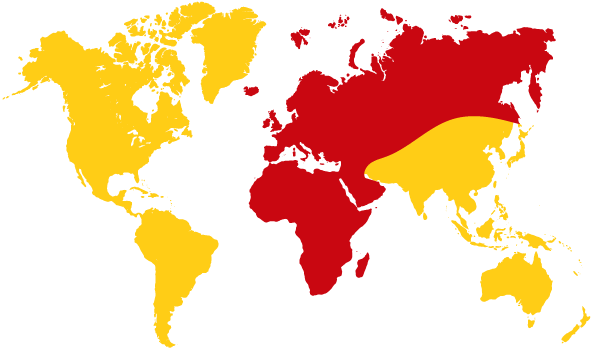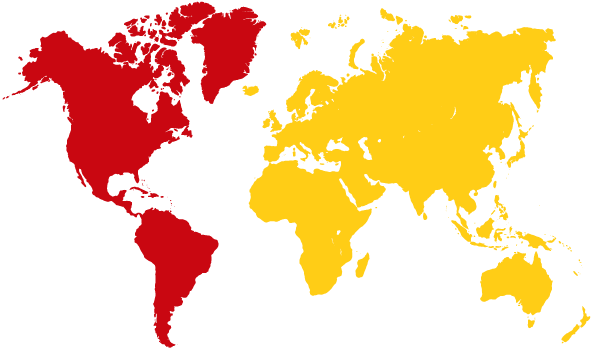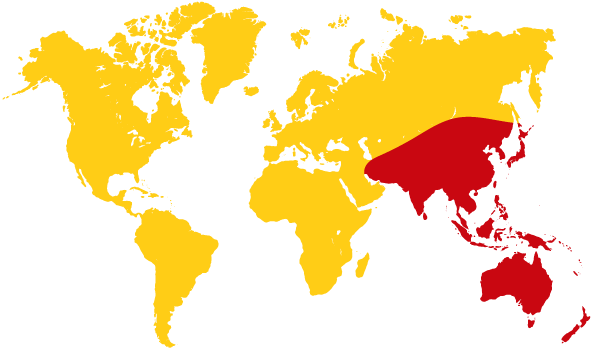1900–1910: Following in the footsteps of Marconi and other pioneers, thousands of young experimenters built simple “spark” transmitters and receivers to send Morse code messages around their neighborhoods — sometimes causing interference to commercial and military communications.
1910–1920: To address the interference problem, licensing was introduced in 1912. Amateurs began to organize themselves into clubs, forming the basis for today’s national associations in Australia (1910), Great Britain (1913), and the United States (1914). The World War caused amateur stations to be shut down but led to advances in radio technology that were quickly adopted by amateurs, once allowed back on the air, in their quest to span greater distances.
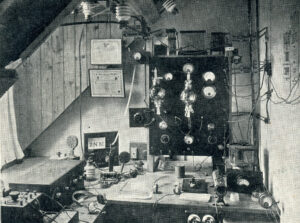
The Twenties: Vacuum tube (valve) technology replaced spark, reducing interference and increasing range. The remarkable properties of the ionosphere were harnessed by amateurs to achieve global communication using relatively low transmitter power and antennas that could fit in a typical backyard. To retain access to “short wave” spectrum amateurs had to overcome pressure from commercial and government interests; the IARU was created for that exact purpose. Morse code remained the dominant mode used by amateurs despite the growth of AM broadcast listening.
The Thirties: Amateur radio grew during the Depression as an inexpensive and productive pastime. It became possible to contact amateurs in 100 different countries, even though there were fewer countries then. Television and the exploration of VHF spectrum occupied the attention of the cutting-edge technologists while others built their own AM transmitters and voice communication became popular. Propaganda broadcasting impacted the short waves, creating a new challenge to amateur spectrum access.
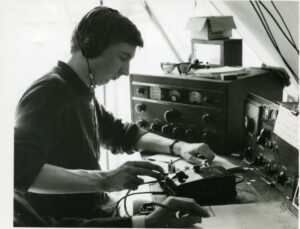
The Forties: World War Two caused amateur radio to be shut down in most countries. Once again, technology was advanced by wartime need. After the war, surplus radio equipment was plentiful and inexpensive. This allowed amateurs to upgrade their stations and for the first time to explore UHF and microwaves. A new mode, radioteletype (RTTY), began to be heard on the amateur bands as a result of the surplus bonanza.
The Fifties: Television broadcasting posed a challenge for amateurs, requiring new diplomatic and technical skills to address “TVI” (television interference) to their neighbors’ and families’ sets. In spite of this it was a decade of rapid growth. Single sideband (SSB) dramatically increased the efficiency and reduced the necessary bandwidth of voice communication. Mobile operation became popular. Toward the end of the decade a peak in the sunspot cycle gave amateurs the best ionospheric propagation ever experienced, before or since. Amateurs tuned into the first signals from space after the first Sputnik was launched. Heathkits, complete sets of components with step-by-step instructions for assembly, captured a large share of the equipment market.
The Sixties: Amateur radio officially joined the Space Age with the first amateur-built satellites. Amateur two-way communication by reflecting signals off the moon (Earth-moon-Earth, or EME) was achieved, first on 1296 MHz and later on 144 MHz. Back on Earth, SSB became the dominant HF voice mode. Separate HF transmitters and receivers began to disappear from amateur stations, replaced by transceivers with many circuits shared between the two functions. Good equipment from Japan began appearing in ham shacks throughout the world. Some countries began to issue licenses for VHF and higher frequencies without requiring Morse code ability.
The Seventies: Long-duration satellites made satellite communication a permanent feature for space-minded amateurs. Bolstered by a large domestic market, Japanese manufacturers became dominant globally. VHF and UHF repeaters surged in popularity, extending the range of mobile FM equipment. In the mid-70s the “CB boom” became the biggest source of newly licensed radio amateurs as more-serious hobbyists fled the chaos of the Citizens Band. The decade ended with the important World Administrative Radio Conference (WARC-79) where the many years of work by the IARU led to successful defense of existing amateur bands and new allocations at 10, 18, and 24 MHz.
The Eighties: Microprocessors became the vehicle for rapid development of the digital dimension of amateur radio. Propelled by the adoption of a standard for digital data communication known as AX.25, “packet radio” became a powerful new tool for message forwarding. Another adaptation of a commercial standard, known in its amateur version as AMTOR, brought error-free data communication to the HF bands. The manned space program entered ham shacks around the world as amateurs were able to communicate directly with an astronaut aboard the Space Shuttle in Earth orbit, the first of many to follow on the International Space Station.
The Nineties: Dramatic political events in eastern Europe led to significant changes for radio amateurs there. Globally the Internet represented both a challenge and an opportunity: competition for the time and attention of technologically minded youth on the one hand, an unprecedented medium for information exchange on the other. The digital revolution continued to fuel amateur radio development; few ham shacks were without at least one personal computer integrated into the station. PSK31, a digital mode designed specifically for amateur radio use and not based on a commercial standard, offered weak-signal performance and narrow bandwidth comparable to CW.
The 2000s: The introduction of WSJT, a suite of open-source programs designed for weak-signal digital communication by amateur radio, spurred a wave of propagation observation and investigation using techniques adapted from radio astronomy. Digital voice became popular. Software defined radios (SDRs) offered capabilities that were unimaginable just a few years earlier, at prices amateurs could afford. The 2007 World Radiocommunication Conference (WRC-07) made the first-ever low frequency (LF) amateur allocation at 136 kHz.
The next two WRCs, in 2012 and 2015, allocated new amateur bands at 472 kHz and near 5 MHz respectively. WRC-19 adopted a dramatic improvement of the amateur 50 MHz band in Region 1, providing a degree of global harmonization in this intriguing part of the spectrum.
The amateur experimenters of a century ago would be amazed at what amateurs can do today — and there’s more to come!
